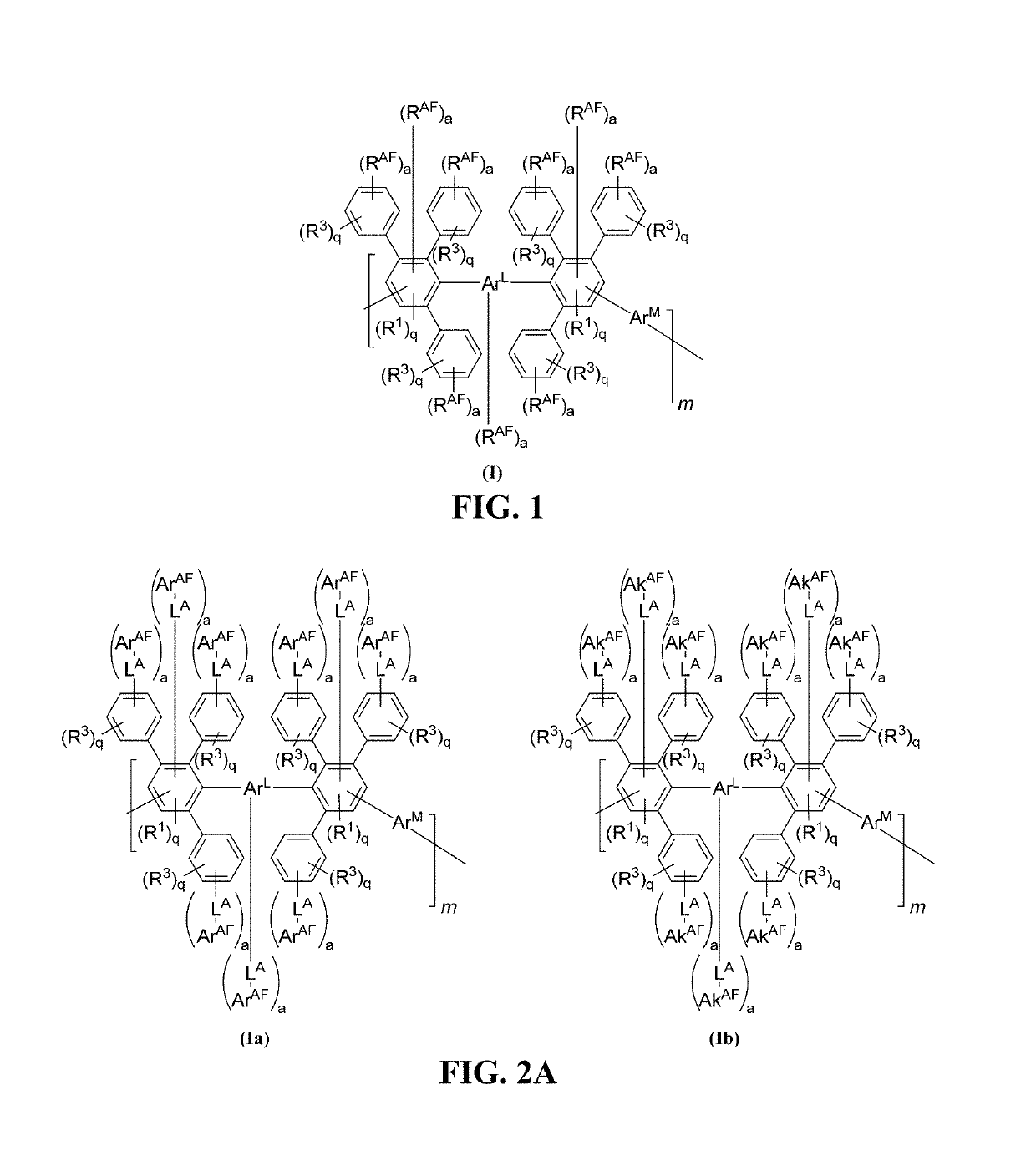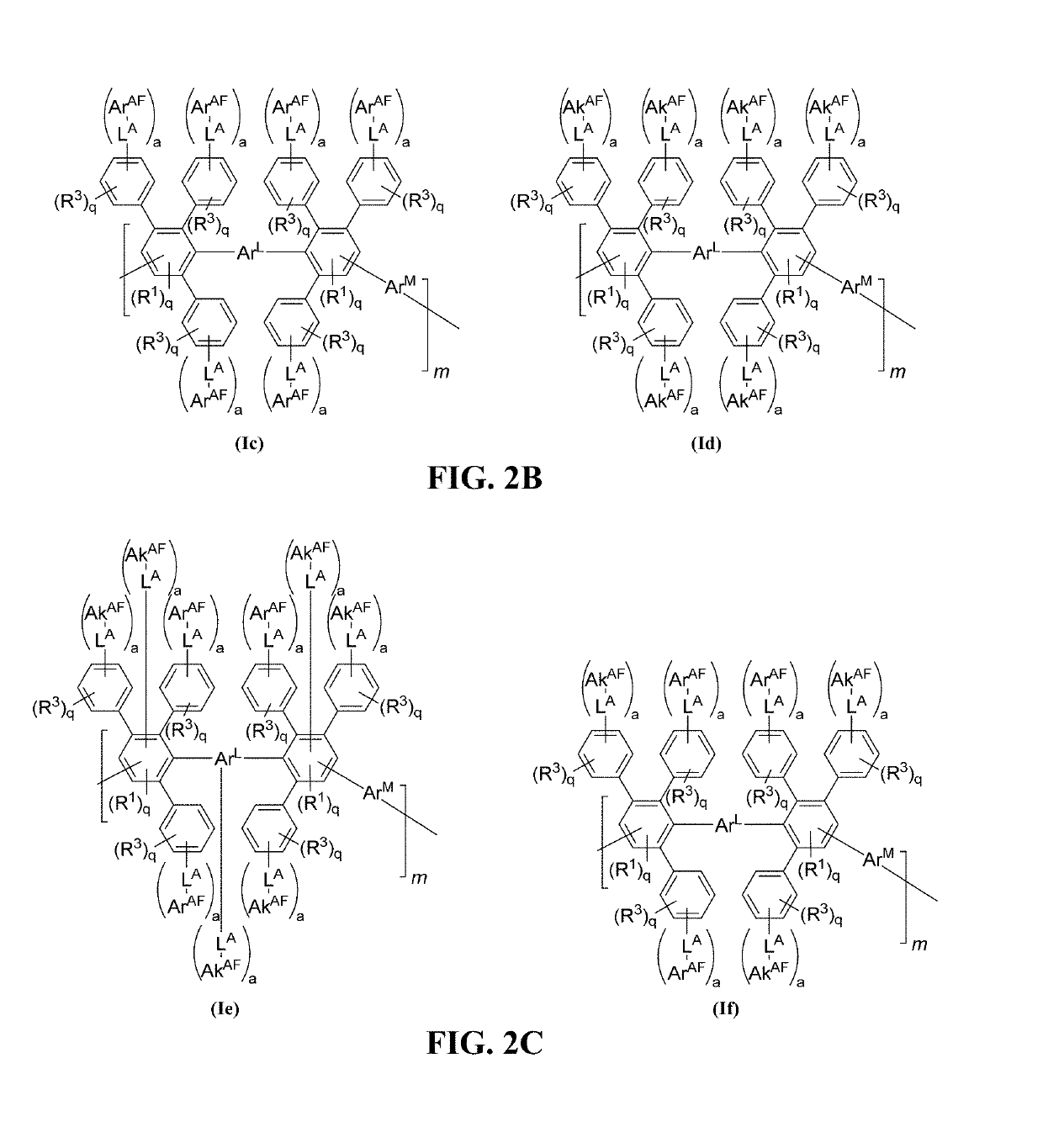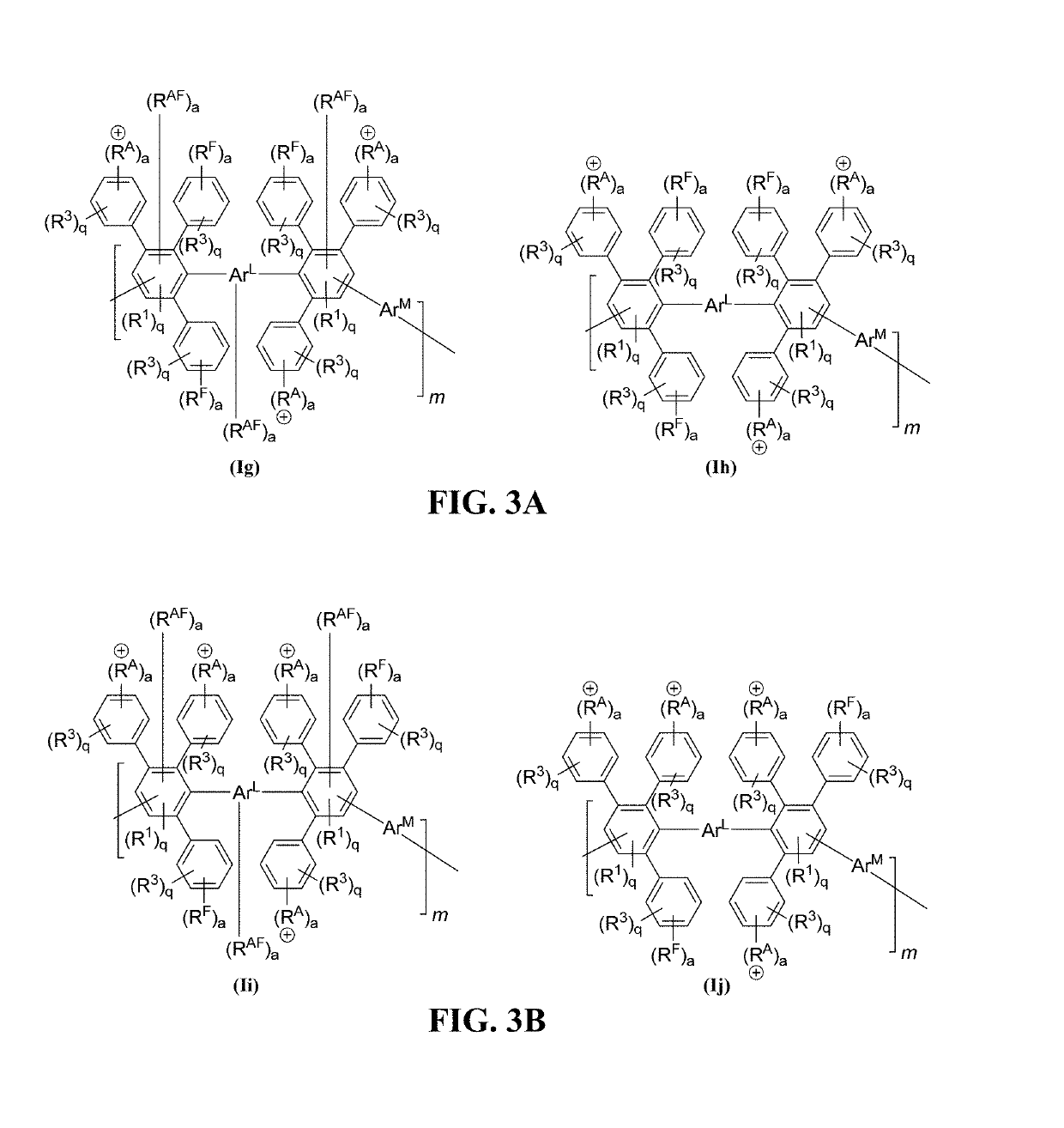Halo-containing anion exchange membranes and methods thereof
a technology of anion exchange membrane and halo-containing anion, which is applied in the field of functionalized polymers, can solve the problems of poor performance of fuel cells, and achieve the effects of improving performance, high affinity, and poor performan
- Summary
- Abstract
- Description
- Claims
- Application Information
AI Technical Summary
Benefits of technology
Problems solved by technology
Method used
Image
Examples
example 1
Containing Anion Exchange Membranes
[0301]Anionic exchange membranes generally employ materials having a cationic charge in order to bind to anions. However, one recent hurdle in use of such anion exchange membranes in fuel cells has been the high water affinity of these materials due to the cationic charge. High water affinity results in poor fuel cell performance at high current density since the water created in the fuel cell is not rejected, and then blocks incoming hydrogen and air from reaching the catalytic sites. This results in flooding. We proposed using halo groups (e.g., fluoro) within the anion exchange polymer structure, which should improve the hydrophobic properties and resist flooding problems. One synthesis issue is that fluorine incorporation is typically difficult and require multi-step reactions.
[0302]Provided herein are compositions and methods including such halo-containing polymers that also include a cationic moiety, thereby enabling its use as an anion excha...
example 2
f Anion Exchange Membranes
[0307]Anion exchange membranes have been developed using poly(phenylene) polymers formed by a Diels-Alder reaction (Diels-Alder polyphenylene polymers, DAPPs). In particular, such a synthesis allows for use of poly(phenylene) polymers as the backbone scaffold. FIG. 6A shows an exemplary poly(phenylene)-based polymer, which displays high backbone stability under alkaline conditions (FIG. 7A). Without wishing to be limited by mechanism, the presence of aryl-aryl bonds provide such a stability as these bonds are less likely to be cleaved, as compared to bonds within heteroatom-containing polymers, such as poly(arylene ether)s (FIG. 6B). As can be seen, stress strain curves are provided for a DAPP (FIG. 7A) and a poly(arylene ether) (FIG. 7B) under varying alkaline conditions. The DAPP-based anion exchange polymer displayed enhanced mechanical stability under tested conditions, as compared to the poly(arylene ether) polymer. Accordingly, DAPP-based polymers dis...
example 3
lization of Diels-Alder Polyphenylene Polymers
[0308]Friedel-Crafts acylation reactions can be employed to functionalize Diels-Alder polyphenylene polymers (see, e.g., U.S. Pat. No. 8,809,483). Such functionalized polymers can be further reacted to provide any useful polymer (e.g., a polymer having formula (I)). As seen in FIG. 25A, a Diels-Alder poly(phenylene) polymer (DAPP) is functionalized by way of a Friedel-Crafts acylation reaction with an alkyl acyl chloride (e.g., 6-bromohexanoyl chloride) in the presence of aluminum trichloride as a catalyst, thereby providing an alkyl acylated DAPP.
[0309]When this Friedel-Crafts acylation approach was used to attach aryl acyl chlorides (e.g., benzoyl chloride), an insoluble product was obtained, which could not be processed further (FIG. 25B, top reaction pathway). Without wishing to be limited by mechanism, Lewis acids, such as FeCl3 and AlCl3, are known to catalyze oxidative carbon-carbon (C—C) coupling, including intramolecular and int...
PUM
| Property | Measurement | Unit |
|---|---|---|
| temperatures | aaaaa | aaaaa |
| temperatures | aaaaa | aaaaa |
| temperatures | aaaaa | aaaaa |
Abstract
Description
Claims
Application Information
 Login to View More
Login to View More - R&D
- Intellectual Property
- Life Sciences
- Materials
- Tech Scout
- Unparalleled Data Quality
- Higher Quality Content
- 60% Fewer Hallucinations
Browse by: Latest US Patents, China's latest patents, Technical Efficacy Thesaurus, Application Domain, Technology Topic, Popular Technical Reports.
© 2025 PatSnap. All rights reserved.Legal|Privacy policy|Modern Slavery Act Transparency Statement|Sitemap|About US| Contact US: help@patsnap.com



